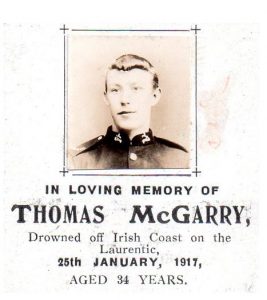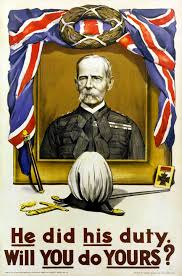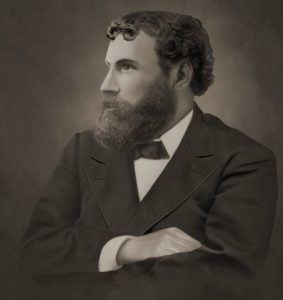by Hannah Healy
Beyond the fields of Flanders and France, the deserts of Egypt, and the skies of Britain there was another significant arena engaged in its own form of warfare during the battles of World War I. The struggle for possession of the seas comprised a significant element of the Great War, and the sacrifices made by crewmembers are ever present in the numerous centenaries of early 2017. On this day, one hundred years ago, Germany resumed unrestricted submarine warfare with devastating effect. However, 1917 serves as evidence of the multiple dangers and effects of naval warfare and the correspondence of the time, the demonstrates the reality of war at sea.
 While 1 February 2017 marks the centennial event of Germany’s official return to unrestricted warfare, a similar event occurring only a week earlier highlights the damage caused by submarines during unofficial campaigns. On 25 January 1917, the H.M.S. Laurentic sank off the coast of Donegal after hitting a mine laid by the German submarine ‘U80’ on the previous day [1]. Originally a passenger ship, the Laurentic was commissioned by the admiralty shortly after the outbreak of war in 1914. On the day of her demise the liner was travelling to Canada with a cargo comprising of 35 tons of gold, worth £5 million: the gold was badly needed to pay for munitions for the war effort [2]. Besides the large financial blow of losing such a cargo, the destruction of these ships brought with them a significant personal loss. Of the 475 men aboard, 354 died. Many of the men many succumbed to the intense weather conditions and died of hypothermia awaiting rescue [3]. The recently rediscovered memorial plaque of Thomas McGarry, a fireman who died aboard the H.M.S. Laurentic, in Co. Limerick serves as a reminder of personal loss in wartime [4]. Such loss is mirrored in the correspondence of 1916 following the death of Lord Kitchener aboard the H.M.S. Hampshire. Similar to the Laurentic, the Hampshire struck a German mine off the coast of Orkney killing all but twelve of the crew [5]. Colonel Robert Maxwell describes Kitchener’s death as ‘a big loss’, Samuel Shaw classifies the sinking as ‘very sad’ and The Sligo Harbour Commission felt inclined to send their lamentations to His Majesty himself [6]. Similarly, events such as the service in St Patrick’s Cathedral in memorium of Lord Kitchener, mourned the loss of life in such naval excursions [7].
While 1 February 2017 marks the centennial event of Germany’s official return to unrestricted warfare, a similar event occurring only a week earlier highlights the damage caused by submarines during unofficial campaigns. On 25 January 1917, the H.M.S. Laurentic sank off the coast of Donegal after hitting a mine laid by the German submarine ‘U80’ on the previous day [1]. Originally a passenger ship, the Laurentic was commissioned by the admiralty shortly after the outbreak of war in 1914. On the day of her demise the liner was travelling to Canada with a cargo comprising of 35 tons of gold, worth £5 million: the gold was badly needed to pay for munitions for the war effort [2]. Besides the large financial blow of losing such a cargo, the destruction of these ships brought with them a significant personal loss. Of the 475 men aboard, 354 died. Many of the men many succumbed to the intense weather conditions and died of hypothermia awaiting rescue [3]. The recently rediscovered memorial plaque of Thomas McGarry, a fireman who died aboard the H.M.S. Laurentic, in Co. Limerick serves as a reminder of personal loss in wartime [4]. Such loss is mirrored in the correspondence of 1916 following the death of Lord Kitchener aboard the H.M.S. Hampshire. Similar to the Laurentic, the Hampshire struck a German mine off the coast of Orkney killing all but twelve of the crew [5]. Colonel Robert Maxwell describes Kitchener’s death as ‘a big loss’, Samuel Shaw classifies the sinking as ‘very sad’ and The Sligo Harbour Commission felt inclined to send their lamentations to His Majesty himself [6]. Similarly, events such as the service in St Patrick’s Cathedral in memorium of Lord Kitchener, mourned the loss of life in such naval excursions [7].
 Sadly, the Laurentic would not be the only naval casualties along the Irish coastline in 1917. Following the return to unrestricted naval warfare, German U-boats also sank the Atlantic liner S.S. California and R.M.S. Laconia in February alone. Just three days after President Wilson’s speech, breaking diplomatic ties with Germany, the S.S. California was torpedoed without warning off the coast of Co. Cork. Thirty-eight people drowned, with forty-three casualties [8]. Shortly after this event the R.M.S. Laconia was struck by German torpedoes causing it to sink off the coast of Cork. The sinking of the Laconia was taken as another form of German aggression as submarines appeared to target liners with no regard to the American flag flying on the mast. The following day President Wilson appealed to Congress declaring an urgent need for action against German aggression. One of his main requests was an ability “to employ any other instrumentalities or methods that may be necessary and adequate to protect our ships and our people in the legitimate and general pursuits on the sea” [9]. Prior to 1917 German naval engagement in the British Isles had been minimal and largely restricted. While a blockade had been established in February 1915, it had only lasted for six months and until 1917 much of the German U-boat effort was concentrated in the Mediterranean [10]. It was pressure from neutral America which kept unrestricted warfare to a minimum in 1915, however, by early 1917 this had all changed.
Sadly, the Laurentic would not be the only naval casualties along the Irish coastline in 1917. Following the return to unrestricted naval warfare, German U-boats also sank the Atlantic liner S.S. California and R.M.S. Laconia in February alone. Just three days after President Wilson’s speech, breaking diplomatic ties with Germany, the S.S. California was torpedoed without warning off the coast of Co. Cork. Thirty-eight people drowned, with forty-three casualties [8]. Shortly after this event the R.M.S. Laconia was struck by German torpedoes causing it to sink off the coast of Cork. The sinking of the Laconia was taken as another form of German aggression as submarines appeared to target liners with no regard to the American flag flying on the mast. The following day President Wilson appealed to Congress declaring an urgent need for action against German aggression. One of his main requests was an ability “to employ any other instrumentalities or methods that may be necessary and adequate to protect our ships and our people in the legitimate and general pursuits on the sea” [9]. Prior to 1917 German naval engagement in the British Isles had been minimal and largely restricted. While a blockade had been established in February 1915, it had only lasted for six months and until 1917 much of the German U-boat effort was concentrated in the Mediterranean [10]. It was pressure from neutral America which kept unrestricted warfare to a minimum in 1915, however, by early 1917 this had all changed.

The largely ineffectual campaign of early 1915 led the German navy to make changes to their fleet. These changes saw a substantial change to the impact of naval warfare in the British Isles from late 1916 onwards. U-boat fleets gradually increased in size and armed with eight to twelve torpedoes, an increase from the previous six, the monthly total for September 1916 reached 200,000 tons for the first time [11]. In an aim to knock Britain out of the war before America entered it the increased U-boat fleets began to sink an average of 614,000 tons per month. However, thanks to neutral shipping and other counter-measures, such as the convoy system, the blockade of the British Isles was never entirely successful [12]. While the U-boat challenge failed to knock Britain out of the war the German effort did not go unnoticed, even during the restricted period. In November 1915, civil servant Denis O’Driscoll (1849-1920) wrote to his daughter Bessie of the ongoing naval conflict between Britain and Germany [13]. O’Driscoll claims that the end of the 1916 blockade was not the result of German respect for international law, but rather, due to the damage done to their fleet by the British navy. Noting the continued conflict in the Mediterranean O’Driscoll comments on the ‘inhuman’ sinking of the ‘Ancona’ without any warning on 8 November 1915 off the coast of Sardinia. O’Driscoll goes on to mention the pressure put on the German Emperor by neutral America to obey international law and abide by the rules of engagement but thinks the American government will do little as they are not in the position to ‘resent the insult with dignity or effect’.
In addition to the military side of naval engagements, the Letters of 1916 collection can provide a more personal perspective from the correspondence of those who lived and worked on these ships. For example, William Shaw often writes to his mother about the high level of theft on his ship, the H.M.S. Excellent [14]. Lawrence Brown writes a Christmas card to his sisters to keep them updated on his movements aboard the H.M.S. Defence in December 1915 [15]. The H.M.S. Defence would later sink in the Battle of Jutland and Lawrence was declared dead, his body was never found. In today’s representation of the Great War the trenches of the Western Front often dominate popular culture. However, it is important to remember that in a war such as this there were many frontiers, arenas and engagements.
[1] Robert Guthrie, ‘H.M.S. Laurentic’, North Irish Roots, Vol. 13, No. 1 (2002), p. 22.
[2] Ibid.
[3] Ibid.
[4] Adrian, ‘Lost WW1 memorial plaque of HMS Laurentic fireman returned to family thanks to Europeana 1914-1918’, Europeana 1914-1918 (http://blog.europeana.eu/2017/01/lost-ww1-memorial-plaque-of-hms-laurentic-fireman-returned-to-family-thanks-to-europeana-1914-1918/). Date Accessed: 29 January 2017.
[5] Keith Neilson, ‘Kitchener, Horatio Herbert, Earl Kitchener of Khartoum (1850–1916)’, Oxford Dictionary of National Biography, Oxford University Press, online edn (2011) [http://www.oxforddnb.com/view/article/34341] Date accessed 25 January 2017.
[6] Letter from Robert David Perceval Maxwell to Edith Maxwell 10 June 1916, Letter from Samuel Shaw to Martha Shaw, 11 June 1916 & Letter from Thomas Mercer to Arthur John Bigge, 8 June 1916.
[7] Letter from Fellow & Registrar, Royal College of Physicians of Ireland to the Precentor, St. Patrick’s Cathedral, 9 June 1916.
[8] ‘German sub sinks U.S. passenger ship California’, History.com (2009) (http://www.history.com/this-day-in-history/german-sub-sinks-u-s-passenger-ship-california). Date accessed: 28 January 2017.
[9] “THE WEEK IN REVIEW.” The Journal of Education 85, no. 10 (2120) (1917): 269-78. http://www.jstor.org/stable/42768210. Date Accessed: 28 January 2017.
[10] Karl Lautenschlager, ‘The Submarine in Naval Warfare, 1901-2001’, International Security, Vol. 11, No. 3 (1986), p. 19.
[11] Ibid, 20
[12] Ibid.
[13] “Letter from Denis O’Driscoll to his daughter Bessie, 12 November 1915” https://letters1916.ie/diyhistory/items/show/426
[14] ‘Letter from William Shaw to Martha Shaw, c. 1916’ https://letters1916.ie/diyhistory/items/show/3564
[15] “Christmas card from Lawrence Brown to his sisters, Christmas 1915” https://letters1916.ie/explore/letters/1051